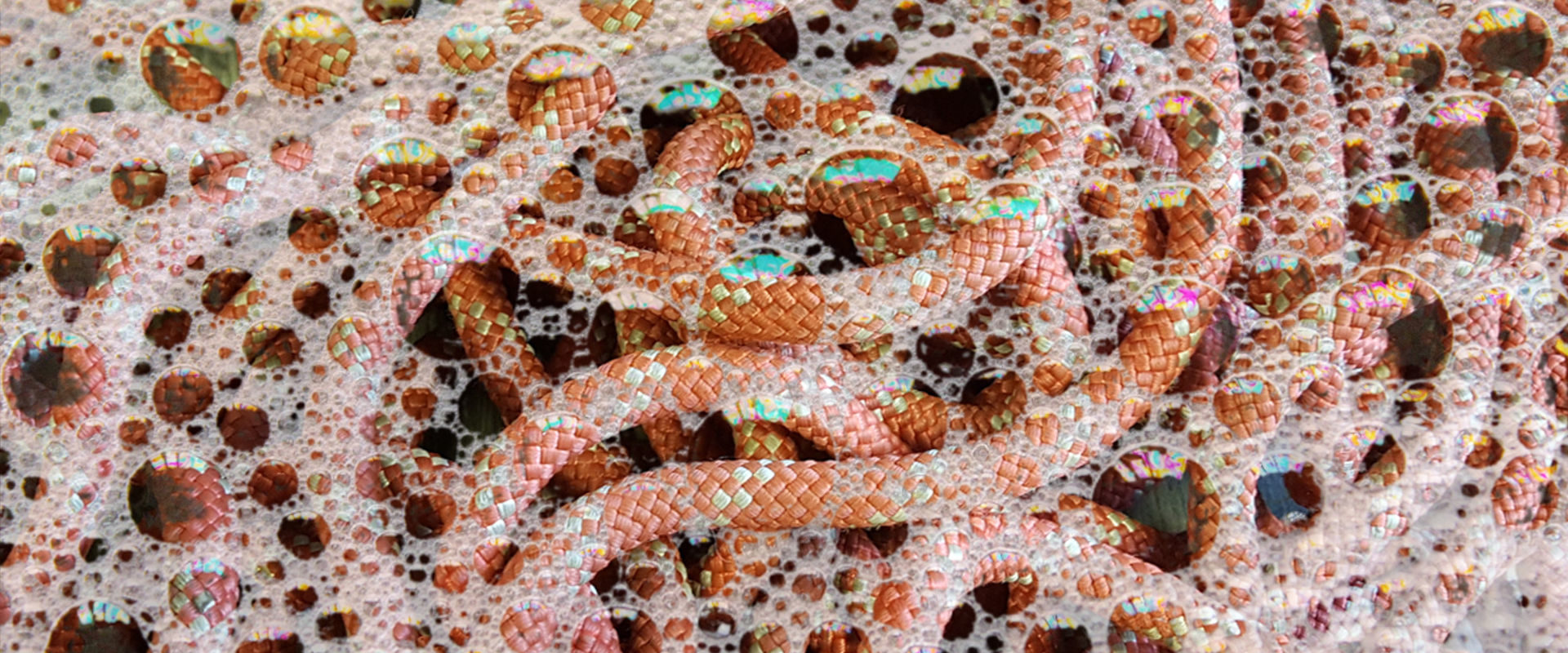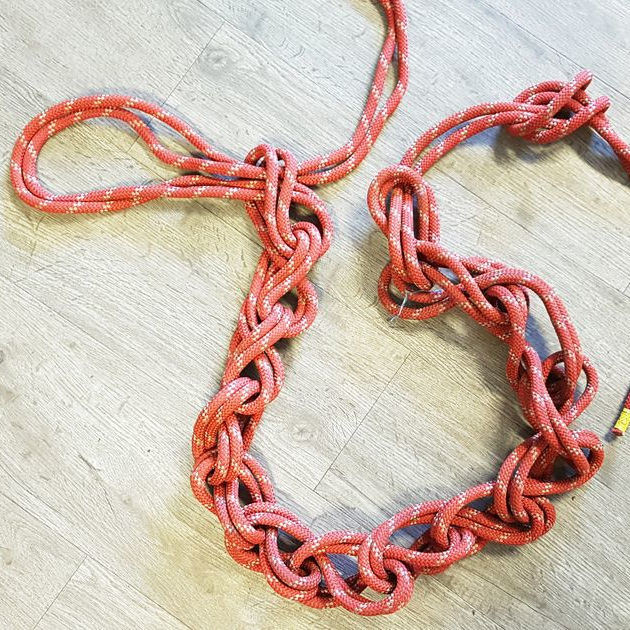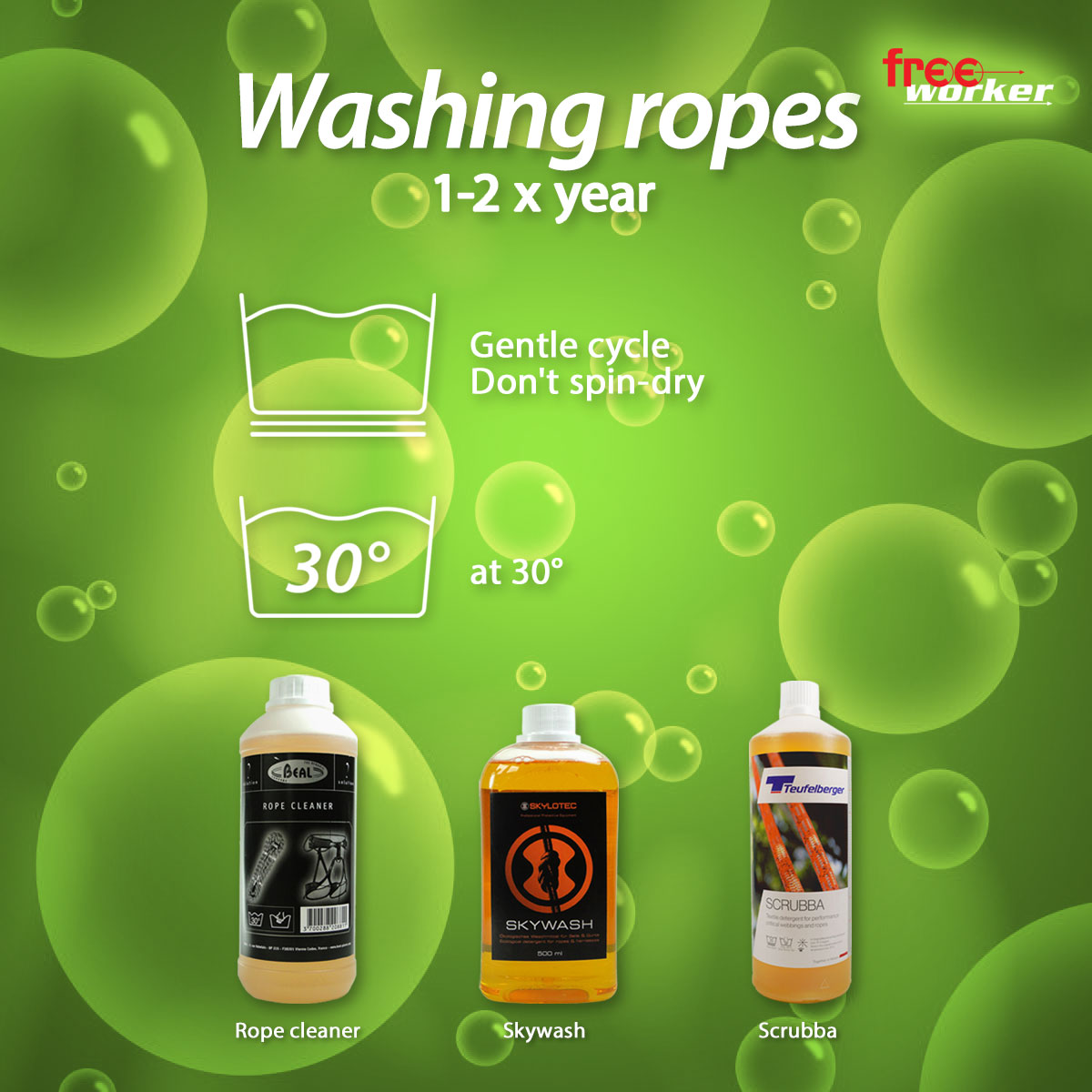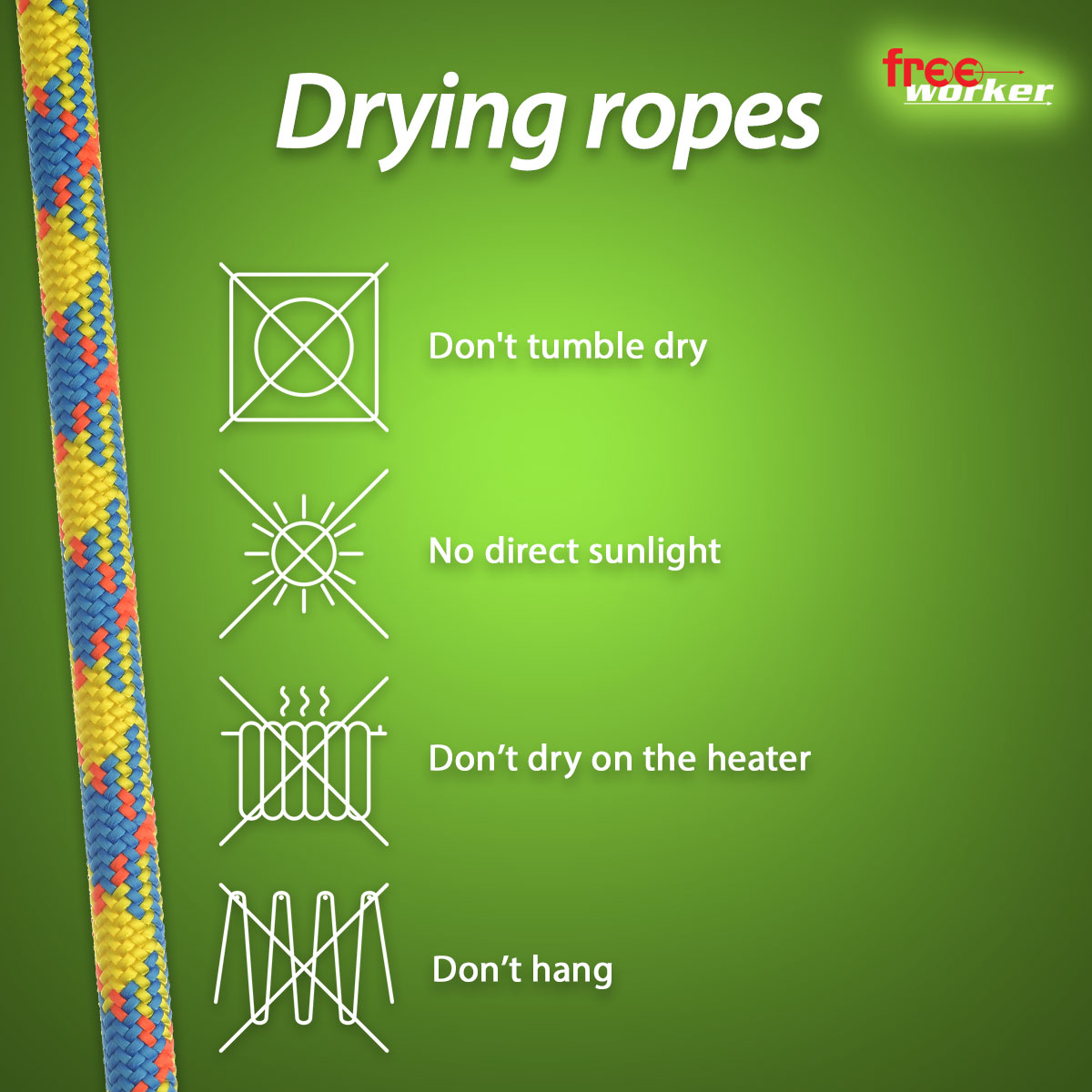Like any utensil, a climbing rope has a limited service life. Especially when climbing trees, ropes are not only exposed to the elements. Even heavy soiling can’t be avoided. Too much dirt can have a negative effect on the service life of a rope. That’s why you should clean your climbing ropes every now and then.
Of course, washing damages the rope. For this reason, climbing ropes should not be washed too often – especially not without a reason. In principle, however, washing has a positive effect on the service life of the rope. How does that work? Well, heavy soiling destroys the rope faster than cleaning. So if you wash your ropes once in a while, it will help.
Washing instructions for ropes
You must pay attention to some points to avoid damaging the rope during the washing process. Positive news first: According to the project „Gezielte Schädigung von Faserseilen“ (Targeted damage to fibre ropes) of rope manufacturer Teufelberger, it is possible to clean ropes in the washing machine.
Cleaning in washing machine
- Do not wash ropes too often, once or twice a year is okay.
- Never spin-dry the rope!
- Wash the rope at max. 30 °C.
- Wash the rope exclusively with special detergent for ropes.
- Put the rope in loops for washing (Daisy Chain, picture above).
- It is best to additionally use a Rope Washbag.
- Thoroughly rinse the rope with clear water.
Manual cleaning
Of course, you can also wash your ropes by hand. Use the Rope Brush and clean the rope under running water. The brush is suitable for removing coarse, external dirt. Deeper cleaning is achieved in the washing machine.
Drying ropes
- Never tumble dry the rope!
- Never dry the rope next to the heater.
- Do not expose the rope to direct heat sources such as sunlight or hairdryer.
- It is best to dry the rope in a cool, dark place.
- If possible, lay the rope flat without tension, don’t hang it up.
- Allow the rope to dry completely, before using it again.
One last important note
If the dirt reaches inside the rope, it can severely damage the individual fibres. In this case, the rope must be replaced.
If you follow these tips, you will keep your rope longer. In this spirit: Climb up high and climb up safe!
More articles on the Freeworker blog
- Proper care of (tree) climbing harnesses
- On a strong line: Tree climbing ropes in tree care
- The splice, the safe end of the tree climbing rope
- Splices at Freeworker: We splice what you need




